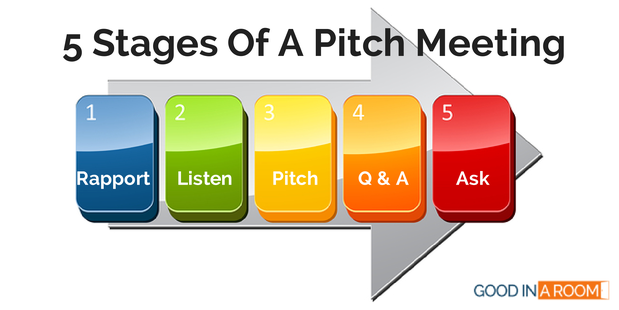Pitch Meetings Structure Stage I: Build rapport and warm up the room

Pitch Meeting Stage 1: Rapport
The goal: to connect in a personal way
Stage 1 is the small-talk phase that is the beginning of just about every meeting you will ever have. It’s important because decision-makers want to work with people they like and trust. If you’re prepared, the small-talk will hopefully turn into a deeper conversation about your common perspectives and interests.
The trap: pitching too soon
If you “get down to business” and start pitching too early, the decision-maker won’t feel connected to you as a person and won’t be listening to your pitch. You want to build rapport so that when the time comes to pitch, you have the decision-maker’s attention.
Key tactic: prepare questions to find common ground
Before the meeting, design a couple “rapport-building” questions to encourage the decision-maker to share their thoughts, feelings, and experiences about things they feel positively about.
- Perhaps you know someone in common, and can design a question around that, e.g.: “How did you first meet (friend in common)?”
- Perhaps you have a hobby or avocation in common. If so, you could design a question around that, e.g.: “I noticed from (print interview) that you like (hobby). What’s your favorite (aspect of hobby)?”
- If you can’t find anything out at all, you can use some of the tried and true conversation starters, e.g.: “How was your weekend?”
The point is to get to know the decision-maker as a person. PROCEED to STAGE 2
————————————————————————————–
Pitch Meetings Happen In Five Stages
- In Stage 1, you build rapport and warm up the room.
- In Stage 2, you ask questions and listen to show respect.
- In Stage 3, you deliver the prepared component of your pitch.
- In Stage 4, you deliver the “improvised” component of your pitch.
- In Stage 5, you ask for one thing if necessary and leave on a good note.

